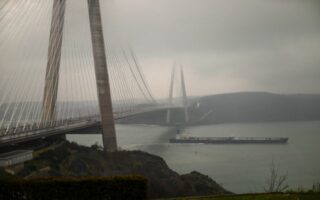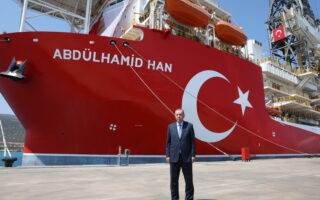The strategy of the ‘Blue Homeland’

Since 1973, Turkey has been systematically building a list of “Greek-Turkish disputes.” The issue of delimiting the continental shelf was first raised in November of that year. In 1974 we had the threat of war if Greece extended its territorial waters and the questioning of the limits of the Athens Flight Information Region.
In 1975, Ankara raised the difference between 10 miles of airspace and 6 miles of territorial waters. In 1978, they discovered the limits of search and rescue zones in the Aegean. And in 1996, they started challenging Greek sovereignty over various Aegean islands.
The “Blue Homeland” (Mavi Vatan), however, is not yet another Turkish claim to be added to the already long list of – according to Turkey – “Greek-Turkish disputes.” The Blue Homeland is a strategy. It incorporates all the aforementioned Turkish challenges and offers the possibility to create new ones.
What does this strategy say? Turkey, as a continental state, completely obliterates the rights of islands within 200 miles of its shores. Only the continental shores of another state can claim such rights and be taken into account in any delimitation. An island has rights only if it is located more than 400 miles from any continental coast or if it belongs to an archipelagic state. Greece is not an archipelagic state. Consequently, it can only claim a continental shelf and an exclusive economic zone (EEZ) on its continental shores.
In the 1970s we were told that the Greek islands are ‘sitting’ on the ‘natural marine extension’ of the Asia Minor peninsula
Thus, according to Turkey, the Aegean is divided in half. The Greek islands that are closer to the Turkish mainland coast have neither a continental shelf nor an EEZ. In fact, on the Blue Homeland maps which have appeared behind Turkish President Recep Tayyip Erdogan in various presentations, Greek islands do not even have territorial waters, but are completely within the area of Turkish jurisdiction, and are the same color as Turkey.
In the 1970s, we had heard similar arguments from Ankara regarding the continental shelf. Back then, we were told that the Greek islands are “sitting” on the “natural marine extension” of the Asia Minor peninsula. Arguments of “natural extension” were also used by other states at the time. They were then completely rejected by the jurisprudence of the International Court of Justice. At the same time, the 1982 United Nations Convention on the Law of the Sea (UNCLOS) clearly defined in Article 121 that islands have full rights in all maritime zones, including a continental shelf and an EEZ.
The Blue Homeland architects are creating something novel, demonstrating gross ignorance regarding the provisions of international law, the more than 10 years of work that went into UNCLOS, but also the relevant jurisprudence of international judicial bodies. They present some international maps and say something vague about international law. But they don’t care about law.
The Blue Homeland is a national strategy independent of international rules, which is invoked with the sole criterion of what they deem to be in Turkey’s best interest. Based on this, the Turks proceeded with the illegal and illogical memorandum they signed with Libya. They will continue with this strategy even when, at some point, Erdogan leaves power.
Angelos Syrigos is a New Democracy MP and associate professor of international law and foreign policy at Athens’ Panteion University.





